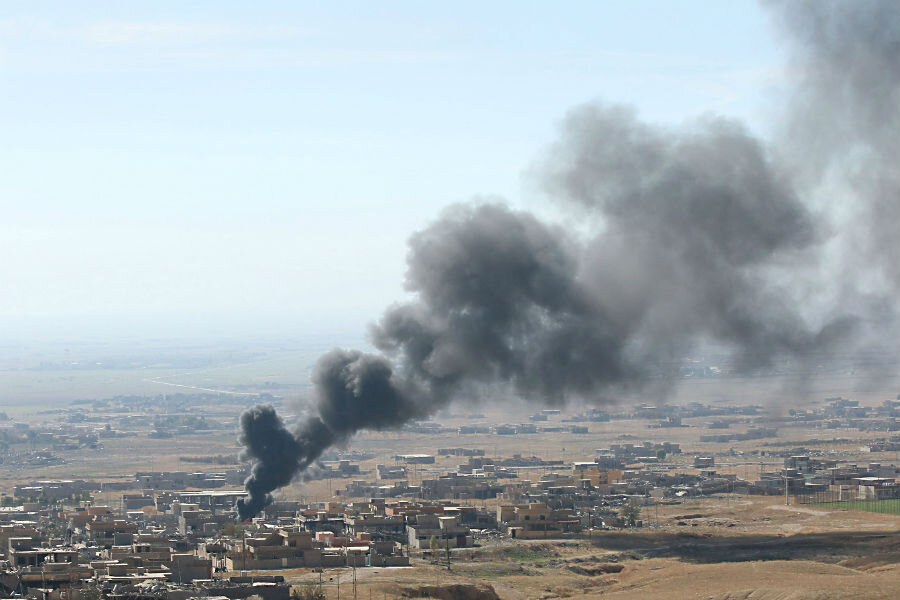Fighting ISIS: Why the Kurdish battle for Sinjar City matters
Loading...
Kurdish forces backed by US-led airstrikes launched a ground offensive Thursday to recapture the northern Iraqi town of Sinjar from ISIS, aka the Islamic State.
The Kurdish peshmerga captured a strategic highway in the early hours of the offensive with the help of thousands of lightly armed Yazidis. They also established positions along the supply route between Raqqa in Syria and the Iraqi city of Mosul, the Islamic State’s two strongholds.
Sinjar became an early symbol of Islamic State brutality when thousands of Yazidis, a small religious sect, were murdered, raped, and enslaved there last year. Reclaiming the town could give the Kurds, Iraqi government forces, and Shiite militias much-needed momentum in their efforts to defeat the militant group.
As many as 7,500 Kurdish fighters were moving on “three fronts to cordon off Sinjar City, take control of ISIL’s strategic supply routes, and establish a significant buffer zone to protect the city and its inhabitants from incoming artillery,” Kurdish officials said in a statement, using an acronym for the Islamic State.
Following the early morning strike on Thursday, the Kurds captured three villages near Sinjar and penetrated parts of Highway 47, a major east-west road that serves as a lifeline for the Islamic State.
"The peshmerga will continue operations to re-establish government control over key portions of the areas,” said the coalition in a statement. Kurdish officials estimate that there could be as many as 700 Islamic State fighters positioned around Sinjar.
The New York Times reports that Thursday's plan called for the peshmerga, joined by Yazidi forces and Kurdish special forces, to descend from Sinjar mountain and hit the Islamic State on multiple fronts in and around the town. As the Times reports:
By midday, the combined forces said they had captured a 35-kilometer, or about 22-mile, stretch of the highway on either side of Sinjar, accomplishing one of the principal aims of the operation. However, there were competing claims from the two sides about which group had taken the road first and who held the checkpoints along the controlled portion of the road.
A US military official said it would likely take two to four days to secure Sinjar and another week to finalize clearing operations. US Army Colonel Steve Warren estimated that 60 to 70 Islamic State fighters had been killed in US-led airstrikes so far on Thursday.
U.S. military advisors are with Kurdish commanders near Sinjar mountain to advise and assist with air strike targets, but are positioned well back from the fighting, a U.S. military spokesman told Reuters.
This report includes material from the Associated Press.






